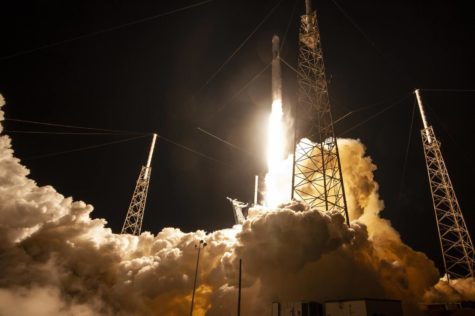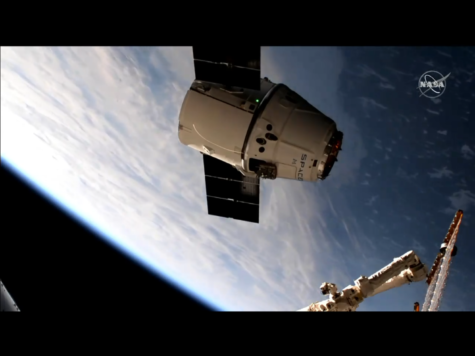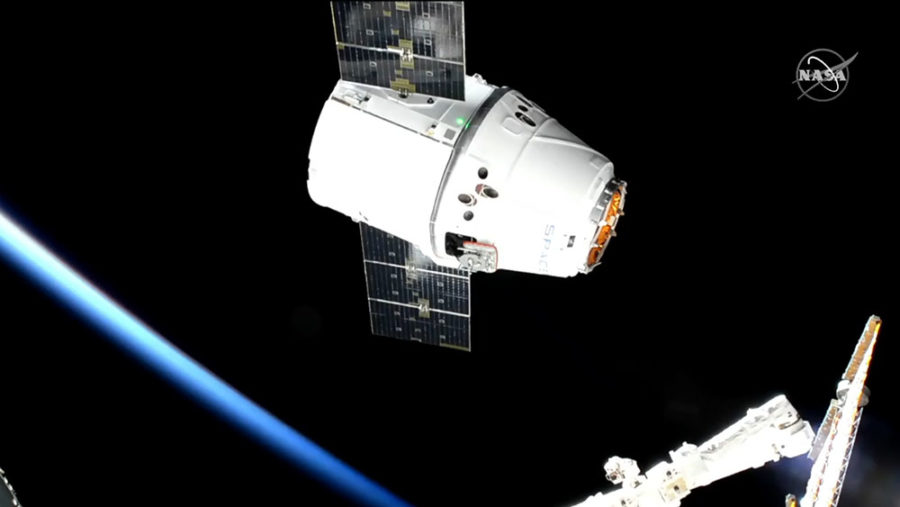SpaceX’s CRS-17 Completes Its Two-Day Journey to the ISS
On May 6, 2019, the Dragon spacecraft was captured and berthed to the ISS, bringing fresh supplies and cargo to the Expedition 59 crew
SpaceX successfully launched their Dragon spacecraft for its resupply mission to the International Space Station (ISS) at 2:48 AM EDT on Saturday, May 4 from SLC-40 at Cape Canaveral Air Force Station. SpaceX originally planned to launch CRS-17 on Friday May 3, however the launch had to be scrubbed due to a helium issue on the Falcon 9 second stage and a power malfunction on the Droneship, “Of Course I Still Love You.” The launch was originally planned for April 26, however a power outage on the ISS delayed the launch for May 3.

The power issue on the ISS was due to a failure of one of the American Segment’s Main Bus Switching Units (MBSUs). All of the MBSUs are on the S0 Truss segment. All four station MBSUs are over ten years old and were installed on STS-112 in 2002. The failure was not critical, but it did affect redundancy on many systems including the CanadArm-2. Luckily the station had a spare and replaced the faulty MBSU, resuming normal operations.
After the Crew Dragon anomaly on April 20 nearby Landing Zone-1, hazardous debris covered the site including hypergolic toxins and the risk of Composite Overlapped Pressure Vessels (COPVs) which still could burst. Due to the anomaly, the droneship was placed a few miles downrange of Cape Canaveral in the Atlantic for the Falcon 9 to land.
After liftoff from SLC-40, the Falcon 9 continued to climb skyward and passed maximum aerodynamic pressure or MaxQ soon after. A few mins after liftoff, the booster, numbered B1056.1 separated from the second stage. The second stage, carrying the Dragon capsule fired its single Merlin vacuum optimized engine and continued its journey to space. At the same time, the first stage did a flip and fired three of its nine Merlin-1D engines for the boostback burn.
Around six mins after launch the booster fired one single Merlin-1D for the entry burn through the earth’s atmosphere. The Falcon 9’s grid fins were deployed which helped it orient the booster in the air. Nearing the droneship, booster B1056.1 fired a single Merlin-1D once more for the short landing burn for a smooth touchdown on “Of Course I Still Love You.”
Seconds later, the second stage completed the long engine burn and placed Dragon in a good orbit. The Dragon, along with its trunk separated from the second stage. The solar panels on the trunk soon deployed.

Dragon continued to orbit the earth for its May 6 arrival to the ISS. After passing through a number of waypoints, Dragon slowly made its way to the ISS. During the approach, ISS cameras revealed a bit of debris from the Dragon’s trunk. Mission Control in Houston took some interest in the debris. The small piece of debris on the trunk is suspected to be a piece of cable from the Transport Erector (TE) at SLC-40. The umbilical cables are supposed to disconnect upon launch. However, the debris was not not a hazard nor a problem, so Mission Control cleared Dragon to continue its approach to the ISS.
Canadian astronaut David Saint-Jacques of the Canadian Space Agency (CSA) controlled the ISS’s robotic arm called the CanadArm-2. The CanadArm-2 captured the Dragon at 7:01 EDT. “As a Canadian I am proud every time we use CanadArm 2 for free flight and capture,” said Saint-Jacques.
After the spacecraft was captured, CanadArm-2 rotated and reoriented Dragon for berthing to the nadir port on the Harmony module on the ISS. 16 bolts on the hatch locked in order for Dragon to connect the the nadir port.
This is the second visit to the ISS for this specific SpaceX Dragon. Dragon number C113.2 was the final first-generation Dragon spacecraft to be built in Hawthorne, CA. C113.2 launched to the ISS for the first time on the CRS-12 mission in 2017. SpaceX currently reuses the remaining first-generation Dragons for cargo missions to the ISS. However, the spacecraft have to be extensively refurbished between flights. Including a recoat of the thermal protection system on Dragon called PICA-X.
Dragon delivered a total of 2,482 kilograms of pressurized and unpressurized cargo to the crew of the ISS. Some of the supplies are for the Expedition 59 crew and others for the Expedition 60 crew later this year. Inside Dragon’s trunk is the Orbiting Carbon Observatory 3 (OCO-3) and Space Test Program-Houston 6 (STP-H6) payloads. OCO-3 will be installed on the Japanese Kibo module. STP-H6 will be installed onto the truss on the ISS.


